
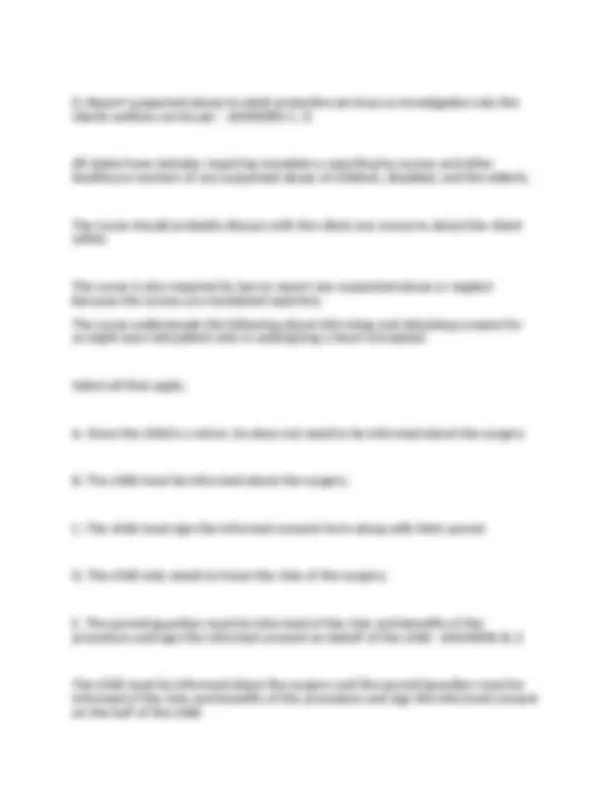
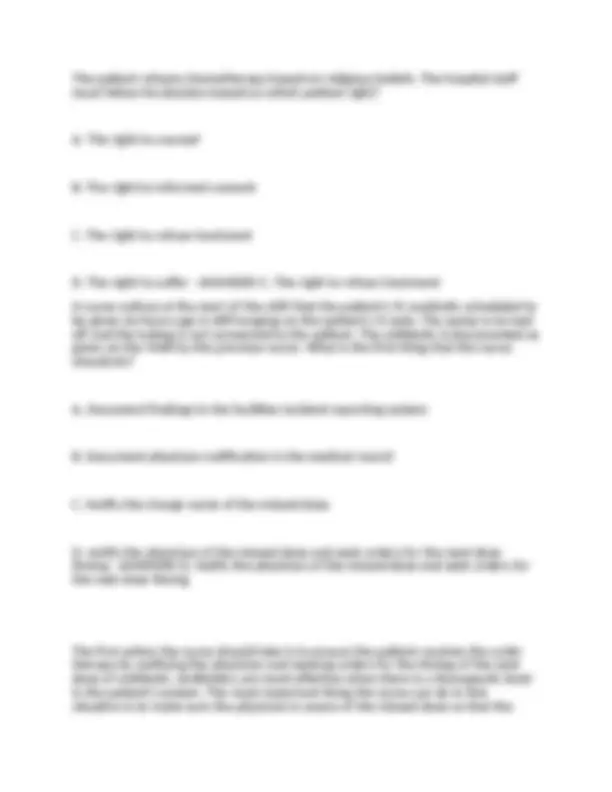
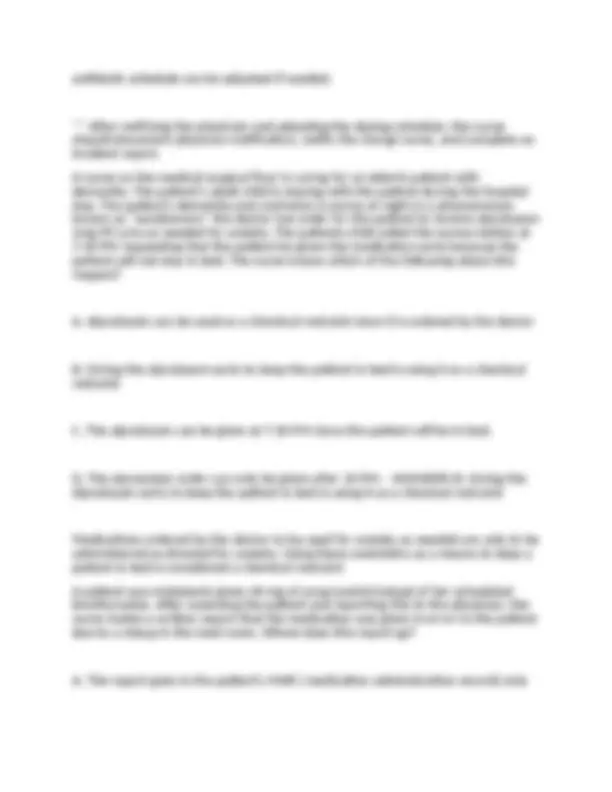
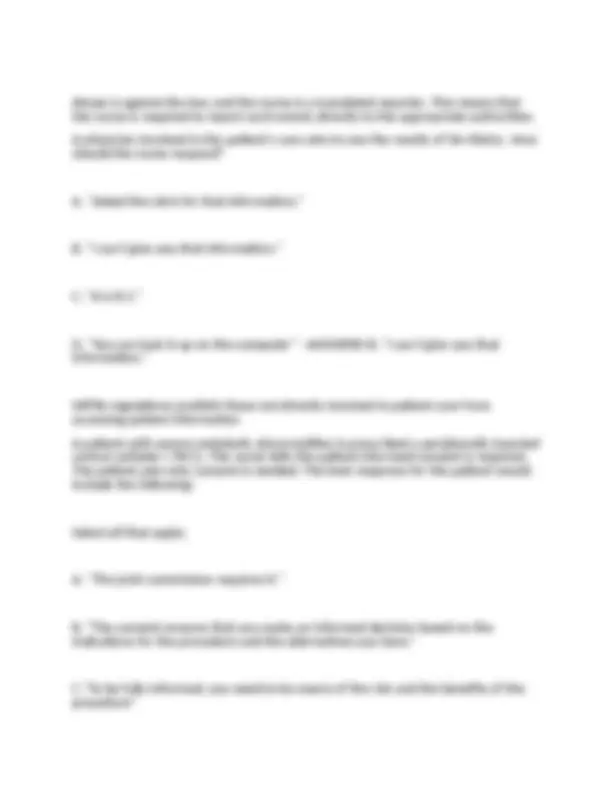
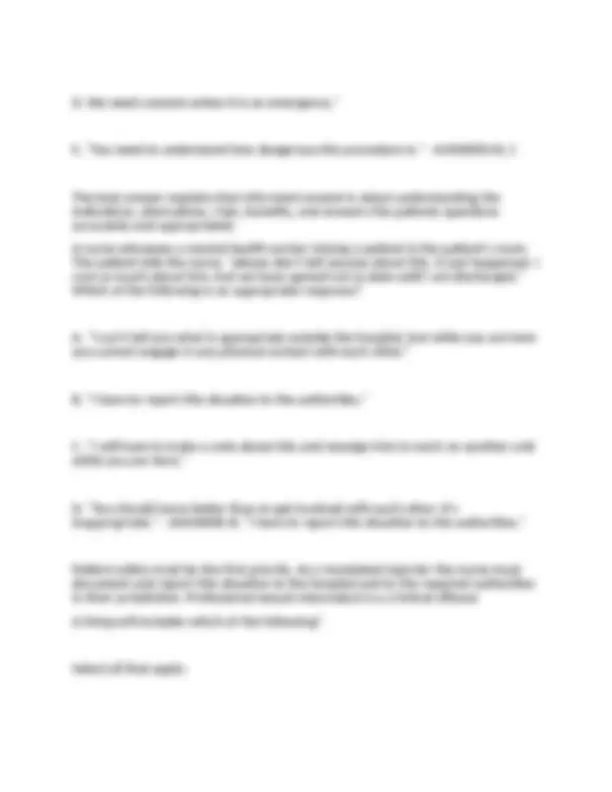
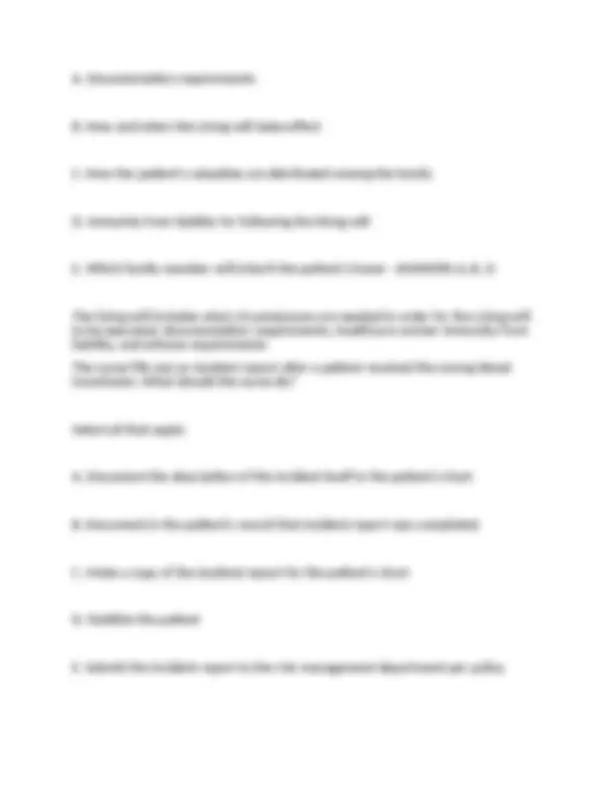
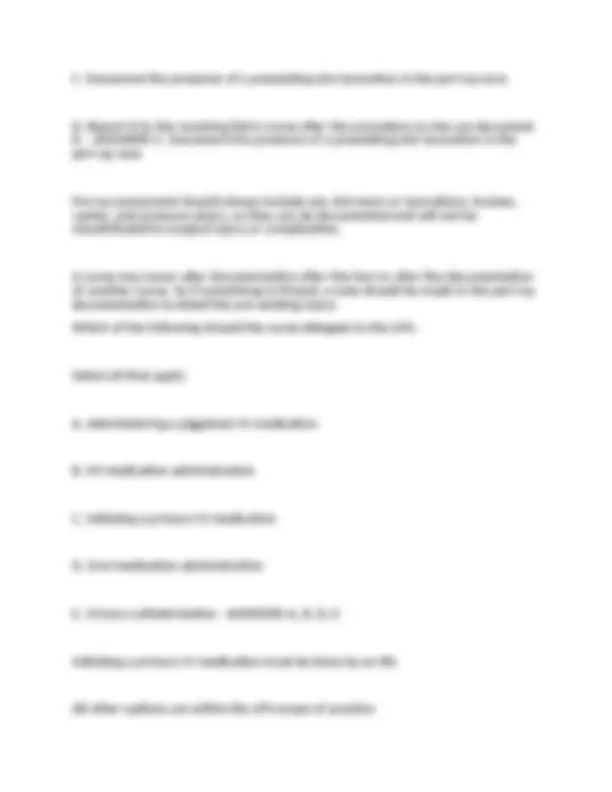
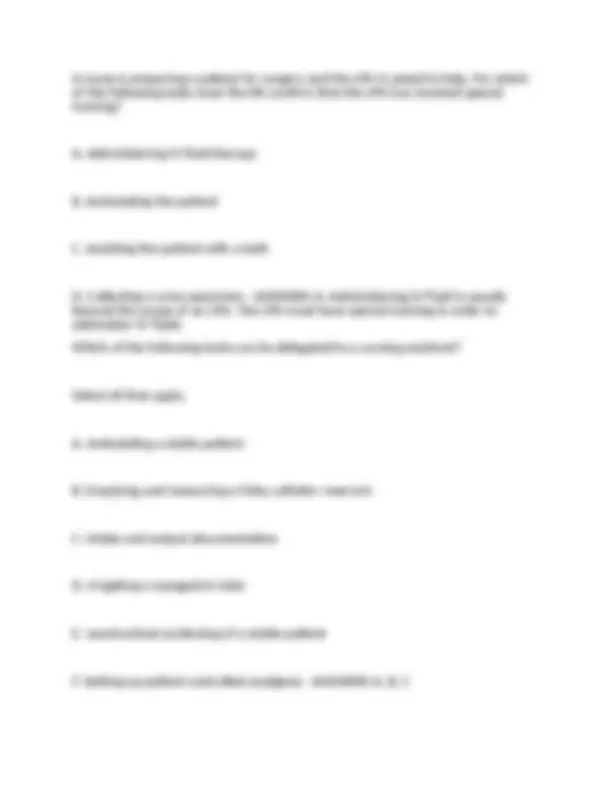
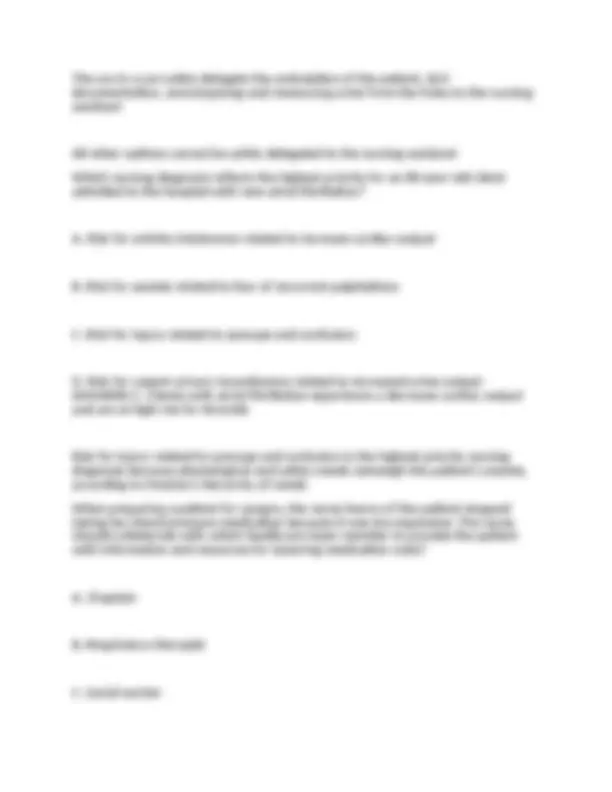
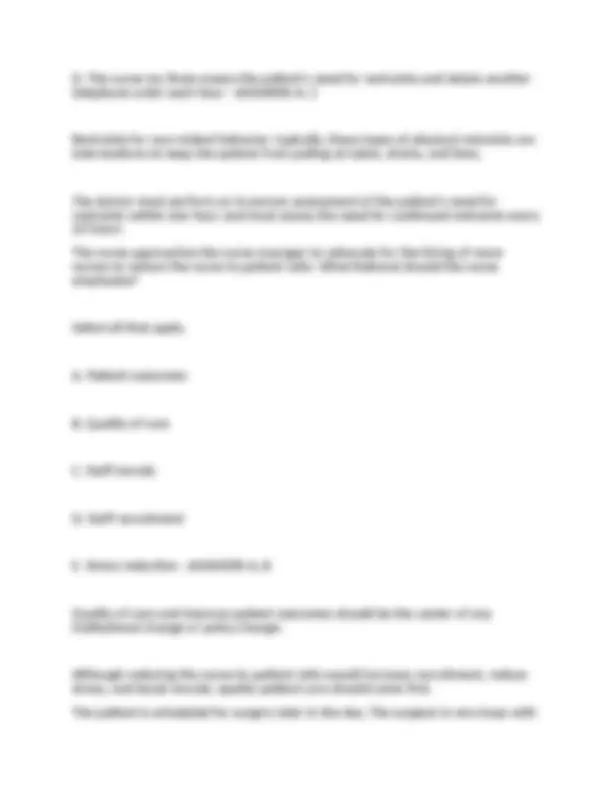
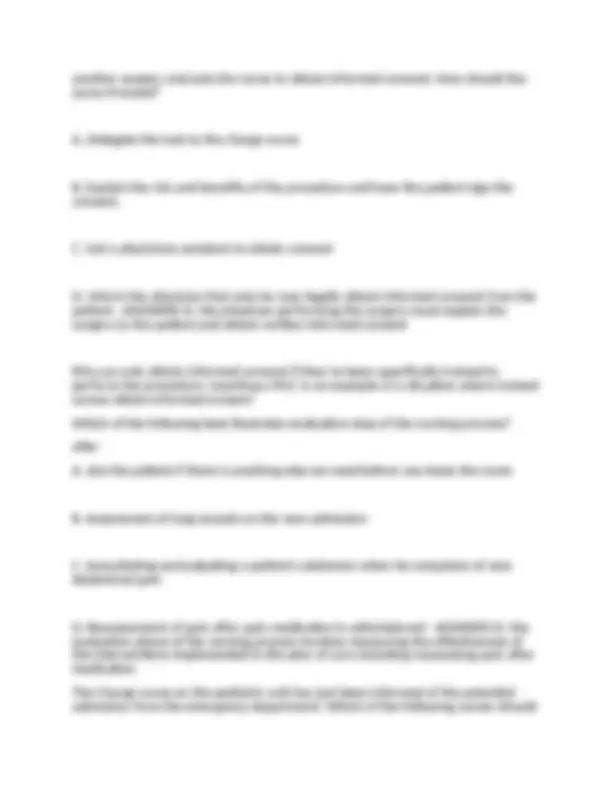
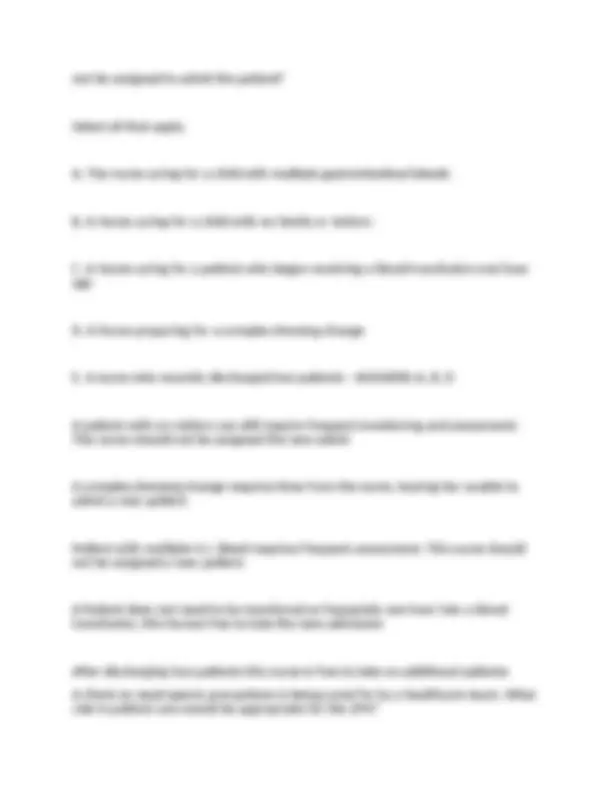
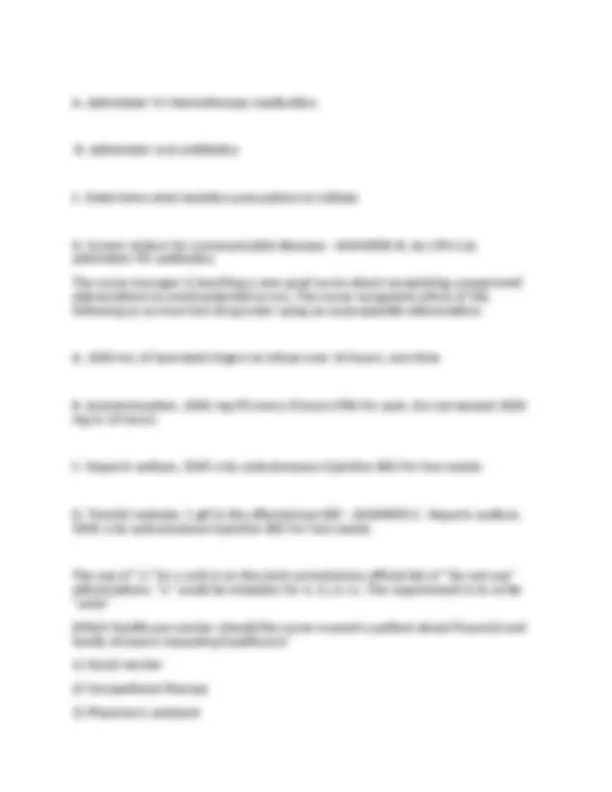
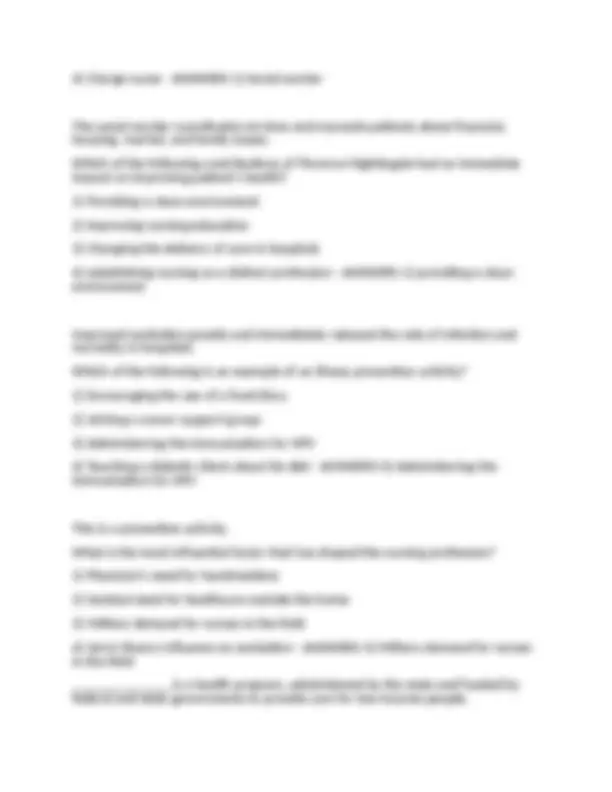
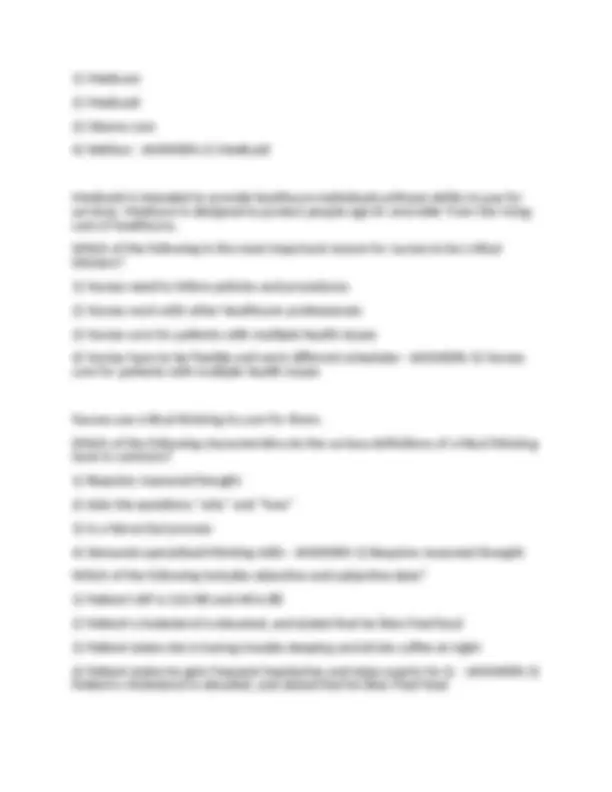
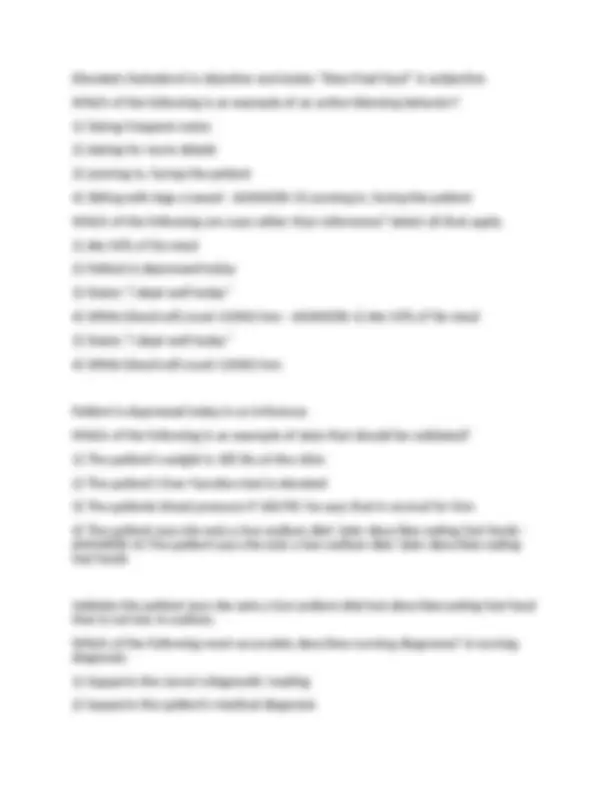
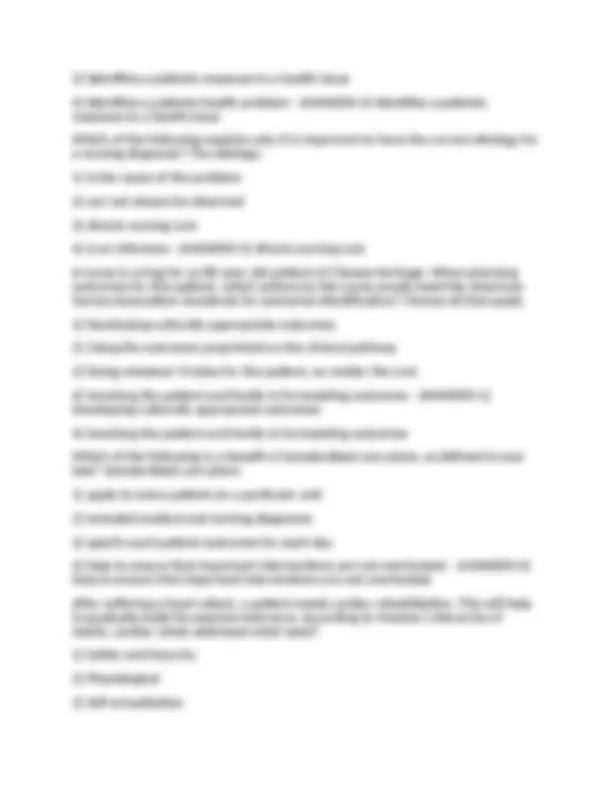
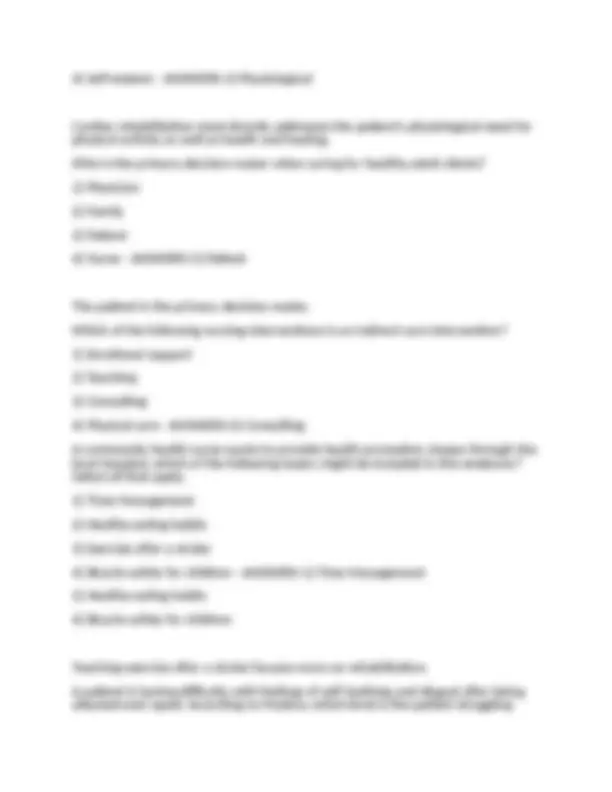
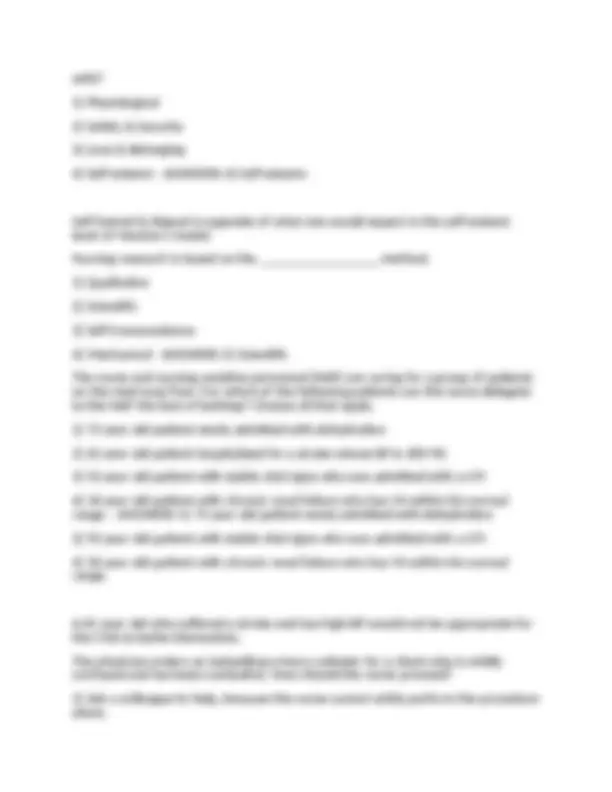
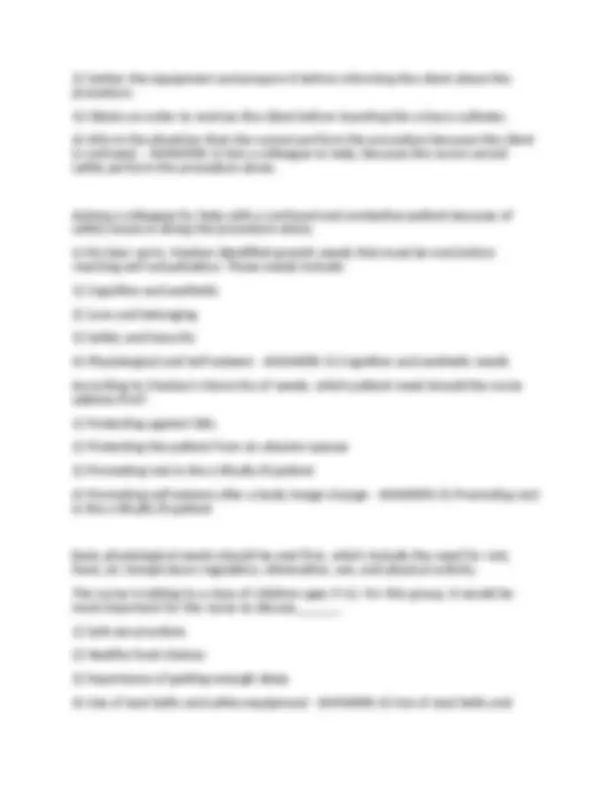
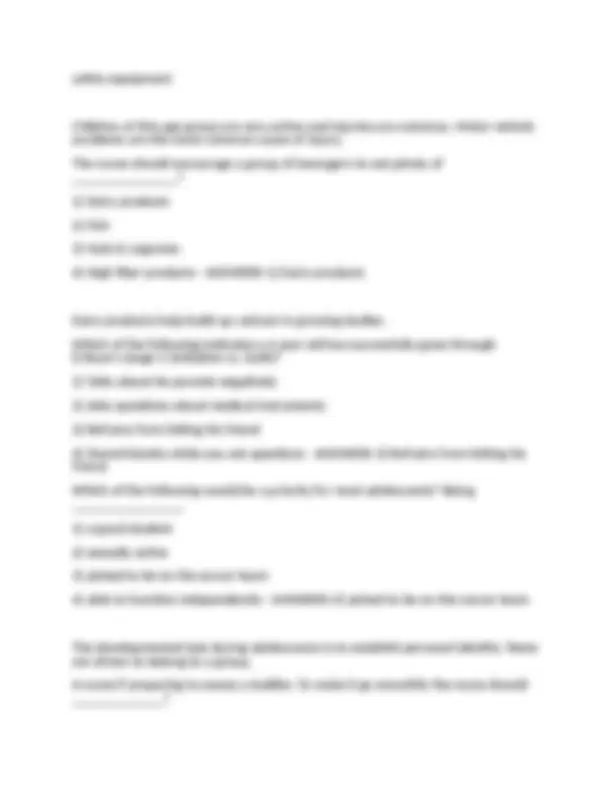
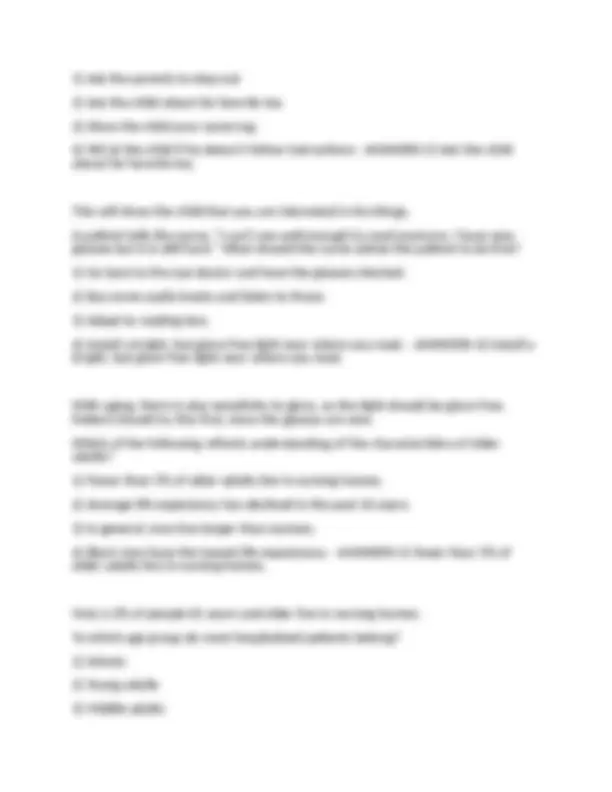
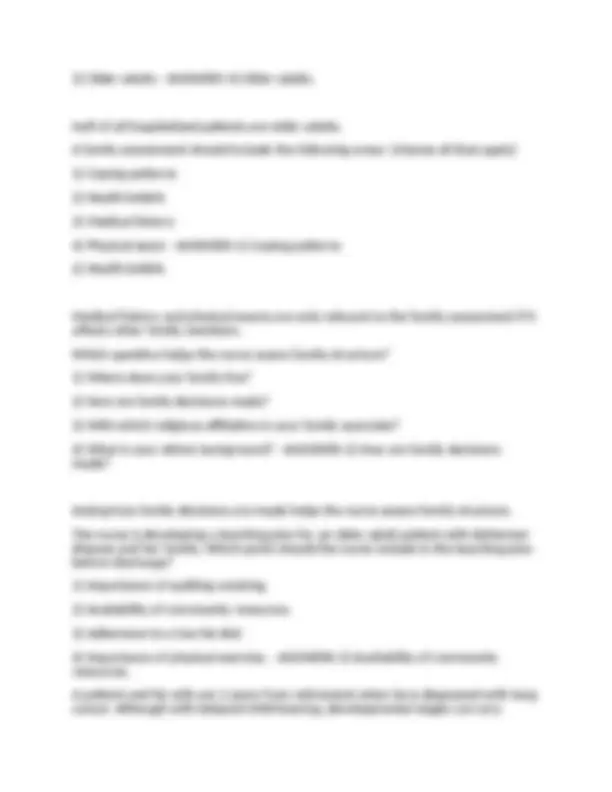
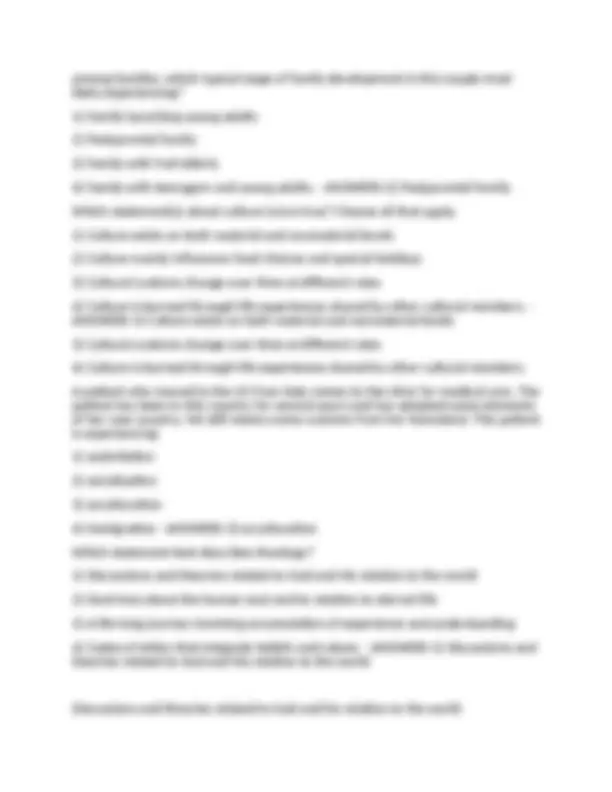
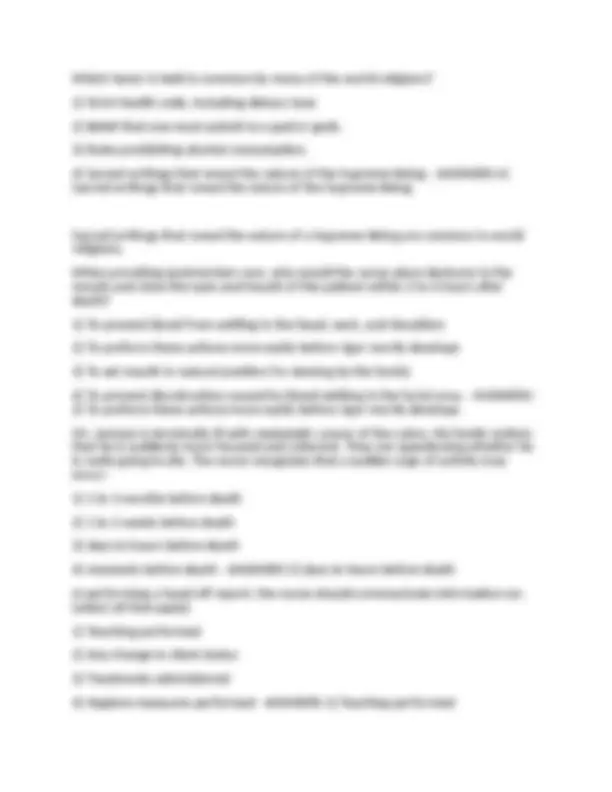
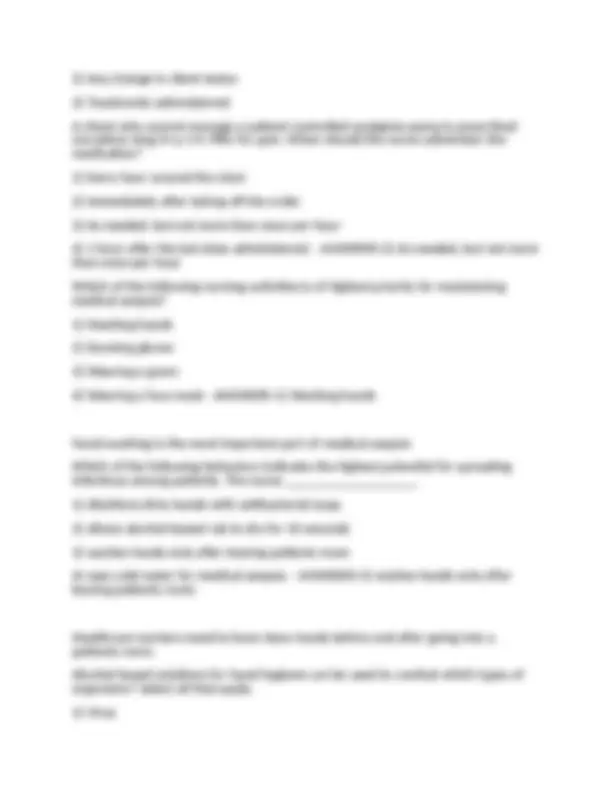
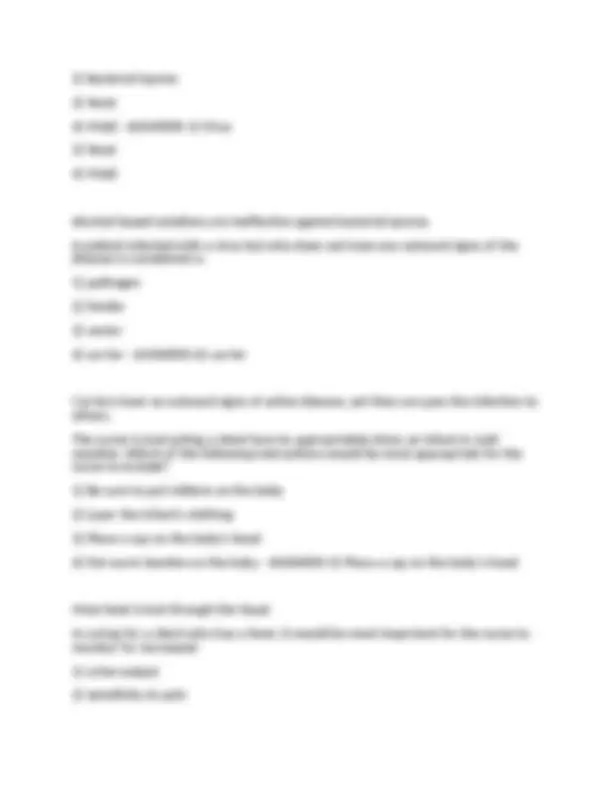
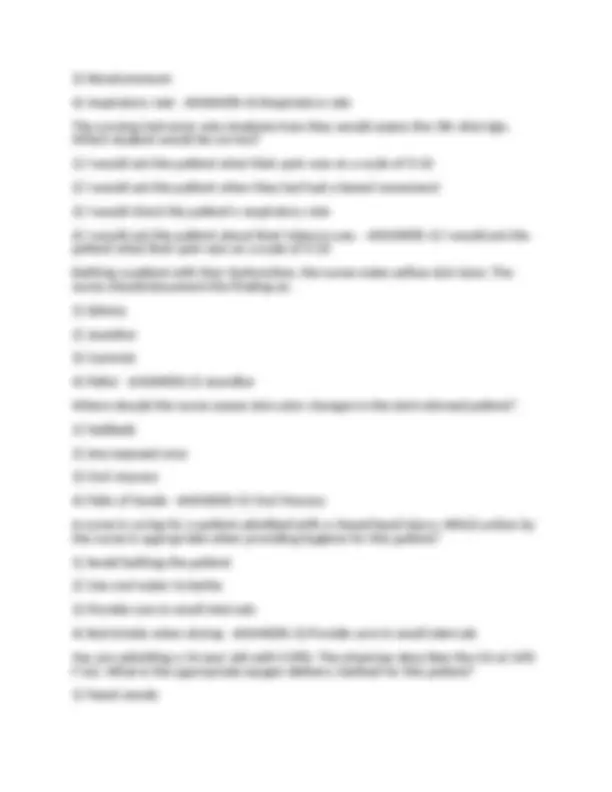
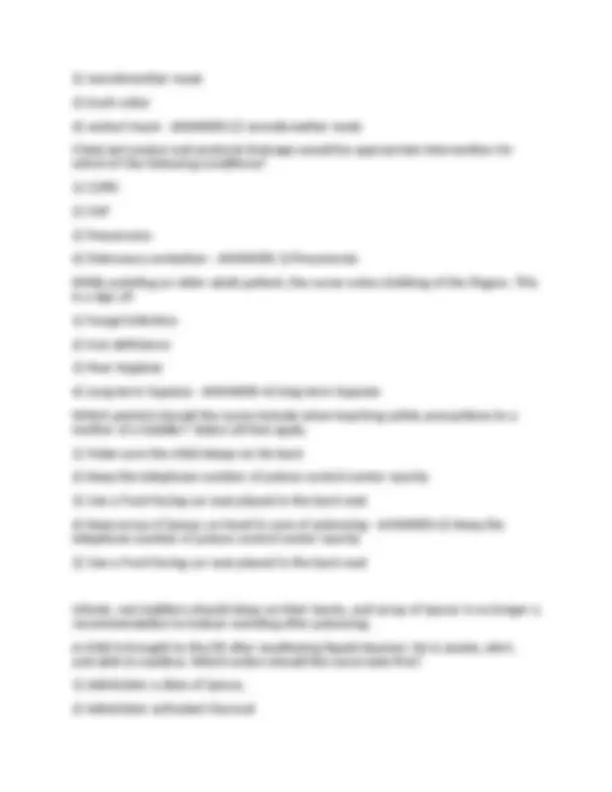
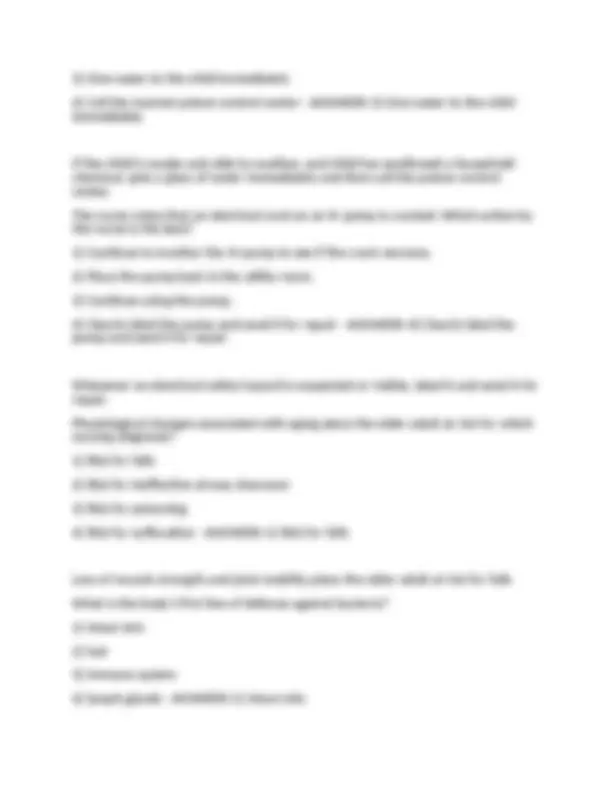
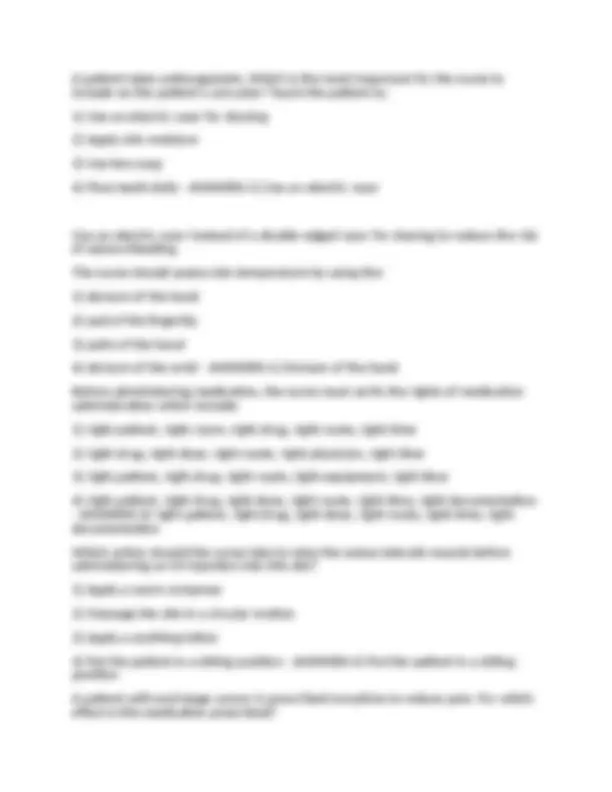
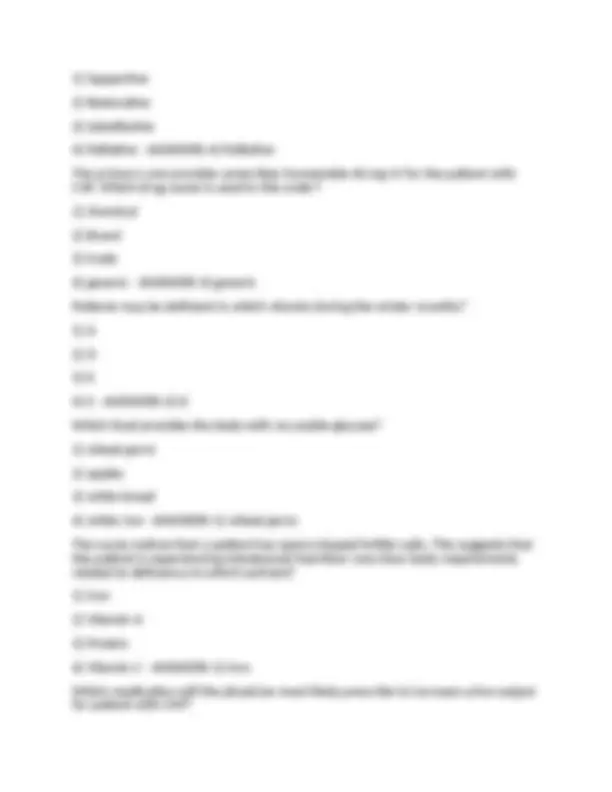
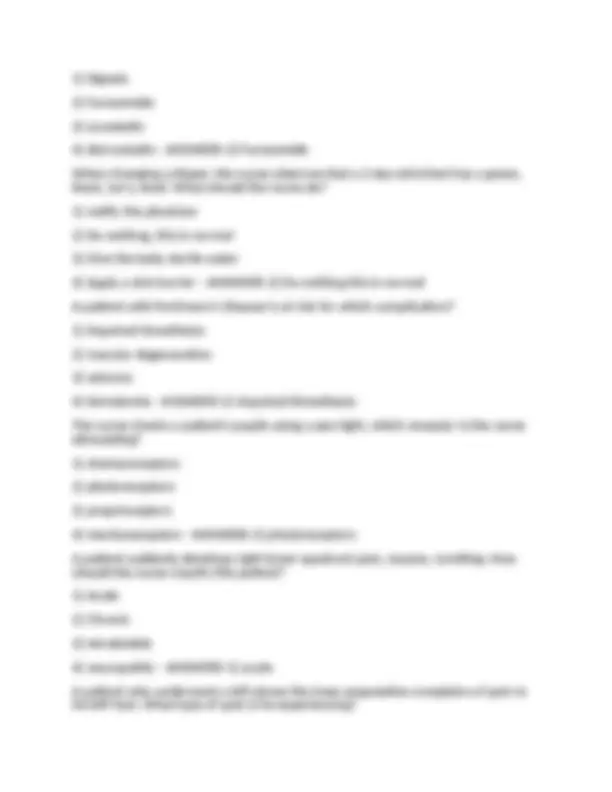
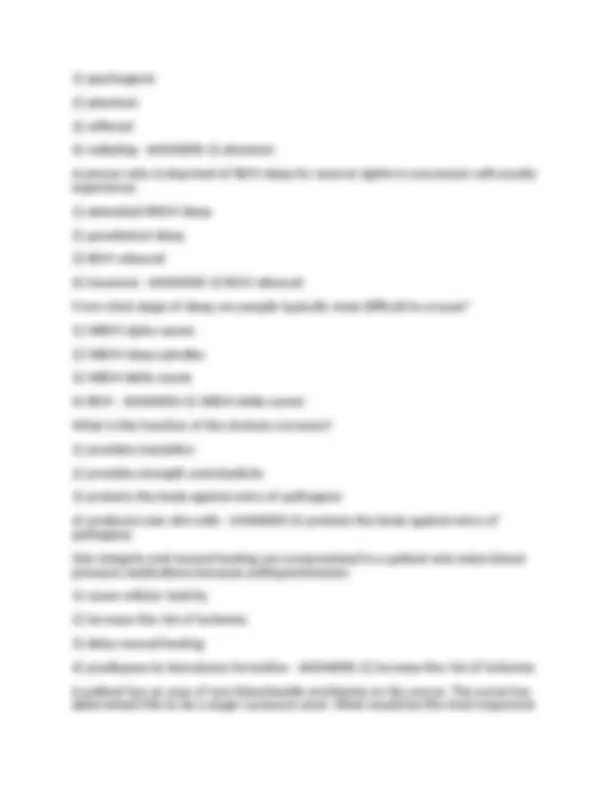
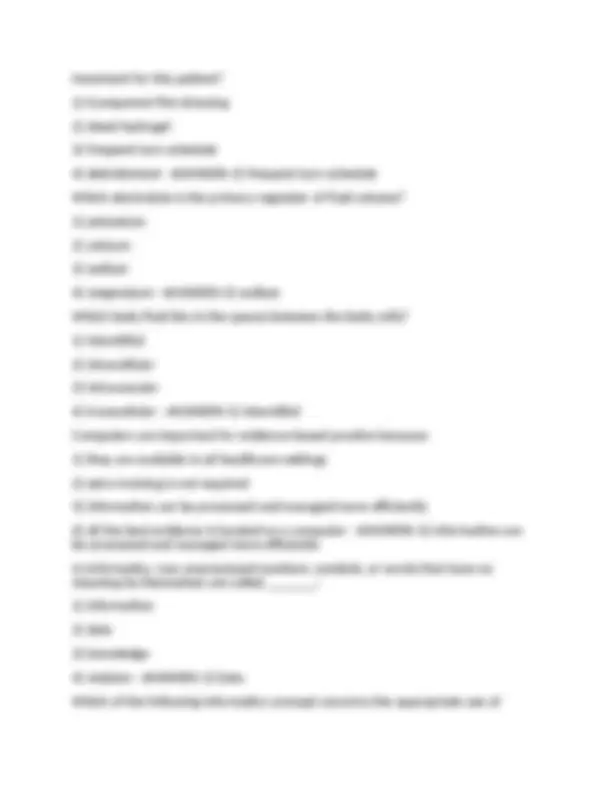
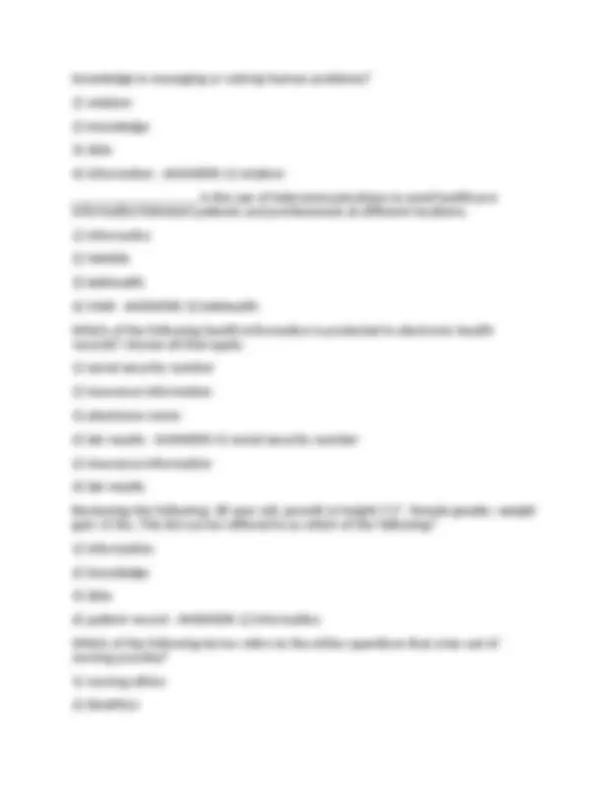
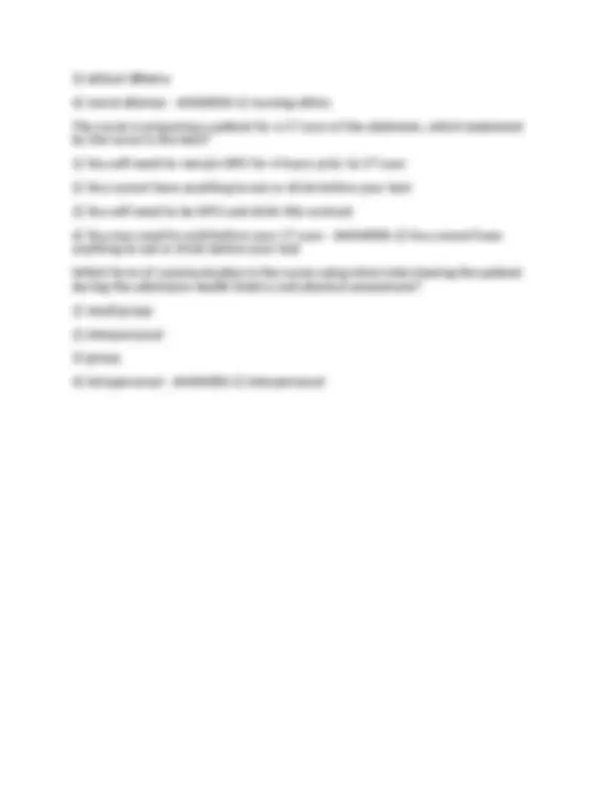


Study with the several resources on Docsity

Earn points by helping other students or get them with a premium plan


Prepare for your exams
Study with the several resources on Docsity

Earn points to download
Earn points by helping other students or get them with a premium plan
Community
Ask the community for help and clear up your study doubts
Discover the best universities in your country according to Docsity users
Free resources
Download our free guides on studying techniques, anxiety management strategies, and thesis advice from Docsity tutors
NURX109 Foundations in Nursing Practice Questions With Complete Solutions 2025 Latest Update Graded A+ Pass. NURX109 Foundations in Nursing Practice Questions With Complete Solutions 2025 Latest Update Graded A+ Pass.
Typology: Exams
1 / 45

This page cannot be seen from the preview
Don't miss anything!






































Which medication administration situations should be documented in a healthcare facility's incident reporting system? A. Medication errors and adverse drug reactions only B. Medication errors that cause patient harm C. Near misses and medication errors only D.near misses, medication errors, and adverse drug reactions - ANSWERS-D. Near misses, medication errors, and adverse drug reactions must all be documented in the facility's incident reporting system. The patient self-determination act of 1990 requires all of the hospitals to do which of the following? A. Collect data on contagious diseases B. Collect data on patient falls C. Inform patients about advanced directives D. Inform patients about medication side effects - ANSWERS-C. The patient self- determination act of 1990 requires all hospitals to inform patients about advanced healthcare directives upon admission to a hospital A nurse is assessing his patients in the morning and finds that a frail a 85 year-old female patient is soiled in bed. The patient reports that she has been asked to cleaned numerous times and has been ignored. Of the following, which demonstrates appropriate documentation in the patient's chart.
A. The patient was found soiled in bed by this RN. she reports being left alone all night by the night shift RN, who did not clean her before the change of shift. She was given a bed bath and provided skin care. Her skin was reddened on her buttocks; emollient applied. B. The patient was found soiled in bed by this RN. She was incontinent of urine and feces and she said she was "ignored for hours" by the night shift RN. She was given a bed bath and provided skin care. Her skin was reddened on her buttocks; emollient applied. C.The patient was found soiled; incontinent of urine and feces. She was given a bed bath and prov - ANSWERS-D. The patient was found soiled; incontinent of urine and feces. She was given a bed bath and provided skin care. Her skin was reddened on the buttocks; emollient applied. **Documentation Must stick to objective descriptions of what happen in any assessments and interventions performed. Personal biases or information that applies misconduct should never be documented in the patient's chart A home health nurse makes weekly visits to an 87-year-old client who lives with her son. When home alone, the client is talkative and friendly, but when the son is home, the client is observed to be withdrawn and appears anxious. The client has bruises, which she states is from "bumping into things" and a weight-loss of 10 pounds in the past month. With these objective findings, the nurse is required to do which of the following? select all that apply. A. ask the client if she has any concerns about her living situation, maintaining an objective, non-accusatory role. B. Confront the son about the abuse, demanding that he turn himself in to seek help for the abusive pattern of behavior. C. Question the client's son privately about the suspicions of his mother's condition and about possible abuse or neglect.
The patient refuses chemotherapy based on religious beliefs. The hospital staff must follow his decision based on which patient right? A. The right to counsel B. The right to informed consent C. The right to refuse treatment D. The right to suffer - ANSWERS-C. The right to refuse treatment A nurse notices at the start of the shift that the patient's IV anabiotic scheduled to be given six hours ago is still hanging on the patient's IV pole. The pump is turned off and the tubing is not connected to the patient. The antibiotic is documented as given on the MAR by the previous nurse. What is the first thing that the nurse should do? A. Document findings in the facilities incident reporting system B. Document physician notification in the medical record C. Notify the charge nurse of the missed dose D. notify the physician of the missed dose and seek orders for the next dose timing - ANSWERS-D. Notify the physician of the missed dose and seek orders for the next dose timing The first action the nurse should take is to ensure the patient receives the order therapy by notifying the physician and seeking orders for the timing of the next dose of antibiotic. Antibiotics are most effective when there is a therapeutic level in the patient's system. The most important thing the nurse can do in this situation is to make sure the physician is aware of the missed dose so that the
antibiotic schedule can be adjusted if needed. ** After notifying the physician and adjusting the dosing schedule, the nurse should document physician notification, notify the charge nurse, and complete an incident report. A nurse on the medical surgical floor is caring for an elderly patient with dementia. The patient's adult child is staying with the patient during the hospital stay. The patient's dementia and confusion is worse at night in a phenomenon known as "sundowners" the doctor has order for the patient to receive alpralozam 1mg PO q hs as needed for anxiety. The patients child called the nurses station at 7:30 PM requesting that the patient be given the medication early because the patient will not stay in bed. The nurse knows which of the following about this request? A. Alpralozam can be used as a chemical restraint since it is ordered by the doctor B. Giving the alpralozam early to keep the patient in bed is using it as a chemical restraint C. The alpralozam can be given at 7:30 PM since the patient will be in bed. D. The alprazolam order can only be given after 10 PM. - ANSWERS-B. Giving the Alpralozam early to keep the patient in bed is using it as a chemical restraint Medications ordered by the doctor to be used for anxiety as needed are only to be administered as directed for anxiety. Using these anxiolytics as a means to keep a patient in bed is considered a chemical restraint A patient was mistakenly given 40 mg of propranolol instead of her scheduled levothyroxine. After assessing the patient and reporting this to the physician, the nurse makes a written report that the medication was given in error to the patient due to a mixup in the med room. Where does this report go? A. The report goes in the patient's MAR ( medication administration record) only
breakthrough pain. The patient states, "I asked for pain medication from the other nurse and was told no because I have a PCA." On further questioning the patient stated that the other nurse there and to disconnect the PCA if the patient continued to complain. The nurse knows that the next appropriate action is which of the following? A. Call the other nurse at home to confront them about the patients accusations. B. Discuss the accusations with the Charge nurse and complete an incident report C. Ignore patient claims since the patien - ANSWERS-D. discuss the accusations with the charge nurse and complete an incident report Pain is a subjective experience, and all patients will experience pain individually from others. When a patient complains of pain, it is the nurses duty to address the pain. If a patient has a PCA pump and orders for breakthrough pain medication, this is because pain medications provided through a PCA are shorter acting while breakthrough pain medication are longer acting to help achieve better pain control A nurse witnesses another nurse slap a patient. The patient has been very difficult to manage and often very rude, observed screaming obscenities at other patients and staff. What action should the nurse take after witnessing this? A. ask the charge nurse reported to the bureau of adult protective services B. Call the patient's family to tell them about the incident. C. Reported to the bureau of adult protective services D. Tell the other nurse that it will be reported if it happens again. - ANSWERS-C. Report it to the bureau of adult protective services
Abuse is against the law, and the nurse is a mandated reporter. This means that the nurse is required to report such events directly to the appropriate authorities. A physician involved in the patient's care asks to see the results of his HbA1c. How should the nurse respond? A. "Asked the clerk for that information." B. "I can't give you that information." C. "It is 8.5." D. "You can look it up on the computer" - ANSWERS-B. "I can't give you that information." HIPPA regulations prohibit those not directly involved in patient care from accessing patient information A patient with severe metabolic abnormalities is prescribed a peripherally inserted central catheter ( PICC). The nurse tells the patient informed consent is required. The patient asks why consent is needed. The best response for the patient would include the following: Select all that apply: A. "The joint commission requires it." B. "The consent ensures that you make an informed decision based on the indications for the procedure and the alternatives you have." C."To be fully informed, you need to be aware of the risk and the benefits of the procedure"
A. Documentation requirements B. How and when the Living will takes effect C. How the patient's valuables are distributed among the family D. Immunity from liability for following the living will E. Which family member will inherit the patient's home - ANSWERS-A, B, D The living will includes what circumstances are needed in order for the Living will to be executed, documentation requirements, healthcare worker immunity from liability, and witness requirements The nurse fills out an incident report after a patient received the wrong blood transfusion. What should the nurse do? Select all that apply: A. Document the description of the incident itself in the patient's chart B. Document in the patient's record that incident report was completed. C. Make a copy of the incident report for the patient's chart D. Stabilize the patient E. Submit the incident report to the risk management department per policy
F. Withhold incident report from the patient's medical records - ANSWERS-A, E, F The incident report is an internal document for the hospital and should not be mentioned in the medical record, nor should a copy be made for the patient's record. Only an actual description of the incident and any actions taken are documented in the patient's chart. **The patient should already be stable before the nurse fills out an incident report Patient requires mechanical ventilation through a tracheostomy after a motor vehicle accident one year ago. The patient's DPOA asks the nurse if the ventilator can be removed. Which of the following responses by the nurse best explains the legal rights of the power of attorney? A. "That decision is a difficult one to make." B. "This is something you need to discuss with the healthcare provider, but legally previous decisions can be changed." C. "We cannot do that. The decision to continue mechanical ventilation was already made." D. "You don't want to keep her alive anymore?" - ANSWERS-B. "This is something you need to discuss with the healthcare provider, but legally previous decisions can be changed." Decisions about care made by the DPOA can be changed at any time. The healthcare provider should be notified so he or she can discuss this with the patients DPOA A nurse is documenting after 76-year-old female with dementia was found on the floor after using the bathroom by herself. The nurse documents the following in
C. Document the presence of a preexisting skin laceration in the peri-op now. D. Report it to the receiving PACU nurse after the procedure so she can document it. - ANSWERS-C. Document the presence of a preexisting skin laceration in the peri-op now. Pre-op assessment should always include any skin tears or lacerations, bruises, rashes, and pressure ulcers, so they can be documented and will not be misattributed to surgical injury or complication. A nurse may never alter documentation after-the-fact or alter the documentation of another nurse. So if something is Missed, a note should be made in the peri-op documentation to detail the pre-existing injury Which of the following should the nurse delegate to the LPN. Select all that apply: A. Administering a piggyback IV medication B. IM medication administration C. Initiating a primary IV medication D. Oral medication administration E. Urinary catheterization - ANSWERS-A, B, D, E Initiating a primary IV medication must be done by an RN All other options are within the LPN scope of practice
A nurse is preparing a patient for surgery and the LPN is asked to help. For which of the following tasks must the RN confirm that the LPN has received special training? A. Administering IV fluid therapy B. Ambulating the patient C. Assisting the patient with a bath D. Collecting a urine specimen - ANSWERS-A. Administering IV fluid is usually beyond the scope of an LPN. The LPN must have special training in order to administer IV fluids Which of the following tasks can be delegated to a nursing assistant? Select all that apply. A. Ambulating a stable patient B. Emptying and measuring a foley catheter reservoir C. Intake and output documentation D. Irrigating a nasogastric tube E. nasotracheal suctioning of a stable patient F. Setting up patient controlled analgesia - ANSWERS-A, B, C
D. Vascular surgeon - ANSWERS-C. Social worker The social worker can find community resources to aid the patient and paying for her medication. Also, the social worker can contact pharmacies to find cheaper alternatives or help the patient apply for government assistance programs The nurse coming on for the evening shift received report that one of the patients on the psychiatric unit is in four point restraints. Which of the following issue regarding the assessment of the patient? A. The nurse will assess the patient at change of shift and then at least every four hours when a new order is required to continue restraints. B. The nurse will assess the patient at change of shift and then at least every hour. C. The nurse will assess the patient at change of shift and then at least every two hours D. The nurse will assess the patient a change of shift and then assign a mental health care worker to check vital signs every hour - ANSWERS-B. The nurse will assess the patient at change of shift and then at least every hour. Vital signs are taking hourly and range of motion is done every two hours for patients in restraints. At the hourly assessment, the nurse will evaluate the patient's response to seclusion or restraints, offer support or reassurance, and attempt to work with the patient to formulate a plan to expedite release. This may include utilizing PRN medications, considering coping skills to use, and contracting for safe behavior on the unit The five-year-old is admitted to the hospital with pneumonia. The nurse observes bruises on the child's back and arms. The Mother is present in the patient's room. What should the nurse do next? A. Ask the mother if she is abusing her child
B. Call the police C. Notify the physician of suspected child abuse D. When the mother leaves, ask the child if she feels scared or unsafe at home - ANSWERS-D. When the mother leaves, ask the child if she feels scared or unsafe at home. If the nurse suspects abuse, he or she should ask the patient in private if he or she feels safe at home to gather more information. While The nurse is a mandated reporter, the nurse should first collect more information before calling the police or reporting her concerns to the physician A nurse on the medical surgical floor is caring for patient who is confused and combative after abdominal surgery. The patient has pulled out the nasogastric tube required for gastric rest. The nurse called the doctor to discuss these issues. The doctor has ordered two point restraints , so the nurse creates a telephone order read back. The nurse knows that the restraint order will require which of the following? Select all that apply. A.The doctor must perform an in person assessment of the patient's need for restraints within one hour B. The doctor must sign a telephone order and assess the need for continued restraints every four hours C. The doctor must sign a telephone order and assess the need for continued restraints within 24 hours
another surgery and asks the nurse to obtain informed consent. How should the nurse Proceed? A. Delegate the task to the charge nurse B. Explain the risk and benefits of the procedure and have the patient sign the consent. C. Get a physicians assistant to obtain consent D. Inform the physician that only he may legally obtain informed consent from the patient - ANSWERS-D. the physician performing the surgery must explain the surgery to the patient and obtain written informed consent RNs can only obtain informed consent if they've been specifically trained to perform the procedure. Inserting a PICC is an example of a situation where trained nurses obtain informed consent Which of the following best illustrates evaluation step of the nursing process? after A. Ask the patient if there is anything else we need before you leave the room B. Assessment of lung sounds on the new admission C. Auscultating and palpating a patient's abdomen when he complains of new Abdominal pain D. Reassessment of pain after pain medication is administered - ANSWERS-D. the evaluation phase of the nursing process involves measuring the effectiveness of the interventions implemented in the plan of care including reassessing pain after medication The Charge nurse on the pediatric unit has just been informed of the potential admission from the emergency department. Which of the following nurses should
not be assigned to admit the patient? Select all that apply. A. The nurse caring for a child with multiple gastrointestinal bleeds B. A Nurse caring for a child with no family or visitors C. A Nurse caring for a patient who began receiving a blood transfusion one hour ago D. A Nurse preparing for a complex dressing change E. A nurse who recently discharged two patients - ANSWERS-A, B, D A patient with no visitors can still require frequent monitoring and assessment. This nurse should not be assigned the new admit A complex dressing change requires time from the nurse, leaving her unable to admit a new patient Patient with multiple G.I. bleed requires frequent assessment. This nurse should not be assigned a new patient. A Patient does not need to be monitored as frequently one hour into a blood transfusion, this Nurses free to take the new admission After discharging two patients this nurse is free to take on additional patients A client on neutropenic precautions is being cared for by a healthcare team. What role in patient care would be appropriate for the LPN?